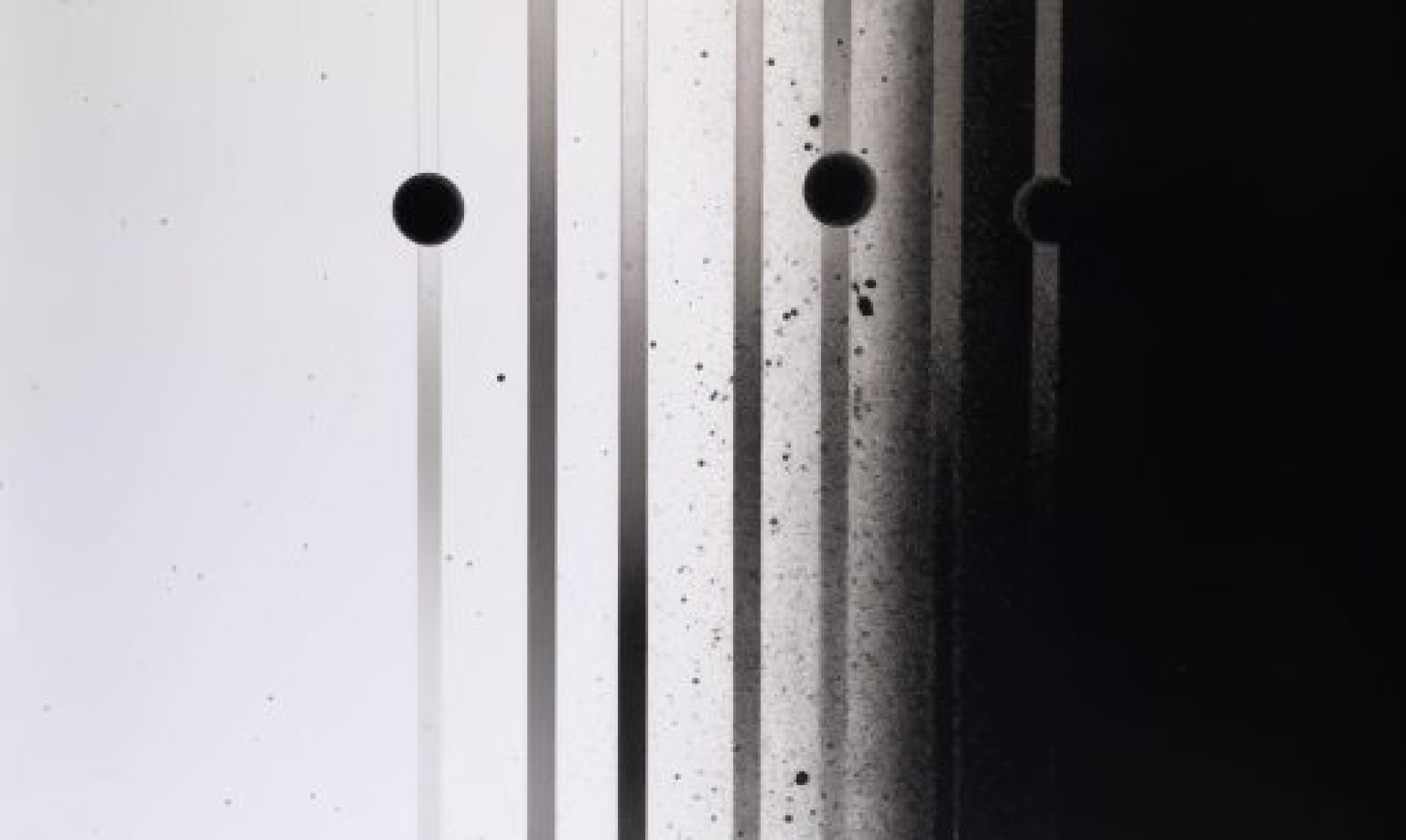Review by Nathan Thomas for Fluid Radio
TMYMTUR – 呼応
Label: ENSL AMDC
Tmymtur, Tomoya Matsuuran
Tmymtur’s new record which I believe can be transcribed as “Yusei” is an intriguing proposition: a sound piece made from over 5,000 recordings of the human voice, manipulated and interpreted by nine different artists from the field of ambient experimental music. The voice recordings were captured using a special microphone with a frequency response wider than that of the human ear, reaching into the range of ultrasound. The ultrasonic frequencies, though perhaps present in the audio file, cannot be reproduced by most consumer speakers; however, it is possible that they made their presence felt as the file was processed by the interpreting artists, influencing the resonances and subharmonics produced.
On initial, casual listening many of the album tracks seem very similar, but upon closer attention the differences in the artists’ approach to the provided material become apparent. Contrasts emerge, for example between i8u’s use of dynamic range and Celer’s gentle stasis, or between Christopher Willits’ turbulence and Taylor Deupree’s airiness. Given that over 5,000 individual recordings went into the creation of the original sound piece, it could be argued that the album represents only the tip of the iceberg in terms of what can be drawn out from the resulting cloud of tones. Personally, I would have liked to have heard a couple of more invasive interpretations included, where the source material is manipulated a bit more radically — the contribution by Stephan Mathieu points in this direction, towards a second album maybe. Yet it is perhaps because of general similarities in the artists’ styles that this collection of remixes makes an excellent manual for those who wish to study ambient composition techniques, either to improve their own compositions or simply to understand why they prefer the work of one artist over another — being able to hear clear differences between one approach to structure or harmonics and another is a valuable learning tool.
It is often argued that ultrasonic frequencies, though technically inaudible, are actually perceived by the senses and possess the capacity to relax the brain, contributing to the soothing effect of sounds such as the flow of a river or wind rustling the trees. I’d love to compare brain scans taken when listening to such sounds with others taken with the music collected as the stimulus: it wouldn’t surprise me if the results were very similar, even without the presence of ultrasonic frequencies. To get the full effect, however, one would have to attend one of Tmymtur’s live performances, such as the one at the Asahi Art Square in Tokyo on 24th March, for which he will construct a sound system capable of reproducing ultrasound; if his material can draw such powerful responses from the range of talented artists represented, then to ‘hear’ this vocal symphony in its full glory should indeed be something special. Tmymtur has managed to create/curate a project in which curiosity about the perception and cognition of sound and ultrasound becomes part and parcel of the aesthetic value of the music, and vice versa; the fact that each of the contributing artists has responded to the source material with sensitivity and imagination makes the album all the stronger.
– Nathan Thomas for Fluid Radio

